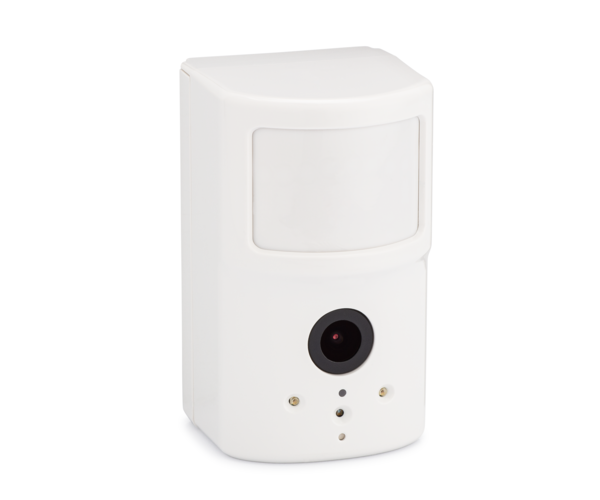The Resideo LTEM-PA and LTEM-PV are dual-path capable communicators that use the LTE Cat-M1 network. During the global chip shortage, these radios have come to prominence because of their availability in the absence of other LTE communicators. They provide nearly the same speed as LTE comms.
Another feature that differentiates the LTEM-PA and LTEM-PV from other communicators is their modular design. These radios are considered a part of the ProSeries lineup, which includes the Honeywell Home PROA7 and PROA7PLUS and the Resideo PROA7C and PROA7PLUSC. The reason for this is that many of the add-on modules that can be used with the ProSeries panels can also be used with the LTEM-P communicators. Including the PROWIFI or PROWIFIZW, the PROLTE-A or PROLTE-V, and the PRODCM.
The LTEM-P Series communicators support an ethernet connection, but if you find yourself in a situation where a wired connection is not possible, then you can install the PROWIFI or PROWFIZW, which will give you WIFI, or WIFI and Z-Wave Plus capabilities. The ability to add a modular cellular unit is exciting as it allows you to install a separate LTE communicator to use instead of the built-in LTE Cat-M1 communicator. This will come in handy if you purchase an AT&T LTEM-PA, but find out later that Verizon would provide a better signal in this particular installation. Also, far in the future, when LTE is eventually phased out, whatever takes its place can easily be installed in the unit, rather than having to replace the entire communicator.
The PRODCM is a dialer-capture module. It allows the LTEM-P Series communicator to work with an alarm panel that has a built-in dialer and can report using Contact ID Format. The PRODCM installs inside a slot in the LTEM-P Series communicator, then two wires are connected between it and the Tip and Ring terminals on the alarm panel. The panel believe's it is dialing out over a phone line, but the module captures the signal, and transmits it via IP, or Cellular. Many of these add-on modules are also compatible with the ProSeries panels, which is why the LTEM-P Series are considered a part of the ProSeries lineup.
Tip 1: Power Wiring
The LTEM-PA and LTEM-PV come with a 9VDC power supply. Depending on the communicator you may be replacing there could be an existing AC Transformer in place. Do not make the mistake of trying to use the existing transformer. You have two (2) options when it comes to powering the LTEM-PA or LTEM-PV. You can use the included power supply, making sure to observe proper polarity with the power wires, or you can wire it so that the communicator receives all its power from the alarm panel. If you choose the latter option, be sure to calculate the current draw for the communicator correctly, and if you decide to leave the battery out of the LTEM-P Series device, turn off the radio's Low Battery Reporting.
Tip 2: Installing A WIFI Module
If you want to add support for WIFI to your LTEM-P module, you can add the PROWIFI module. When the PROWIFI module is installed, the ethernet connection becomes unavailable, so you can only use one or the other of these, but not both. If you want to add both WIFI and Z-Wave Plus capabilities to your system, then you can choose to install the PROWIFIZW.
Using the PROWIFIZW can add Z-Wave support in a situation where it would otherwise be unavailable, such as when using the LTEM-P with a non-VISTA panel. The PROWIFIZW cannot be used as a secondary controller, so it can't be used to extend the range of another controller such as the Tuxedo or VAM. Using the PROWIFIZW also doesn't give you an option to create scenes through Total Connect 2.0, only manual control of Z-Wave devices is available.
Tip 3: Always Default the Communicator
We've found, through painful experience, that it is a good idea to always default the LTEM-PA or LTEM-PV once all the wiring is completed, prior to account creation and activation. To default, hold down the red button on the upper right side of the main communicator board for at least 20 Seconds. The LEDs on the communicator should begin going through their initial power-on sequence. This is how you can tell the default has completed.
Once the communicator has booted completely up, then do one last power cycle. Do this by unplugging the transformer and disconnecting the red battery lead. If the communicator is being powered completely by the panel, simply power the panel down and back up by unplugging its transformer and backup battery. If the communicator battery is still connected though, be sure to disconnect this battery as well to completely power the communicator off. Wait about 30 seconds, then power back on as you normally would. For VISTA panels, plug in the transformer, then the battery. If the communicator has its own DC Power Supply, plug in the communicator battery, then plug in the power supply. Now you can proceed with programming and activation.








